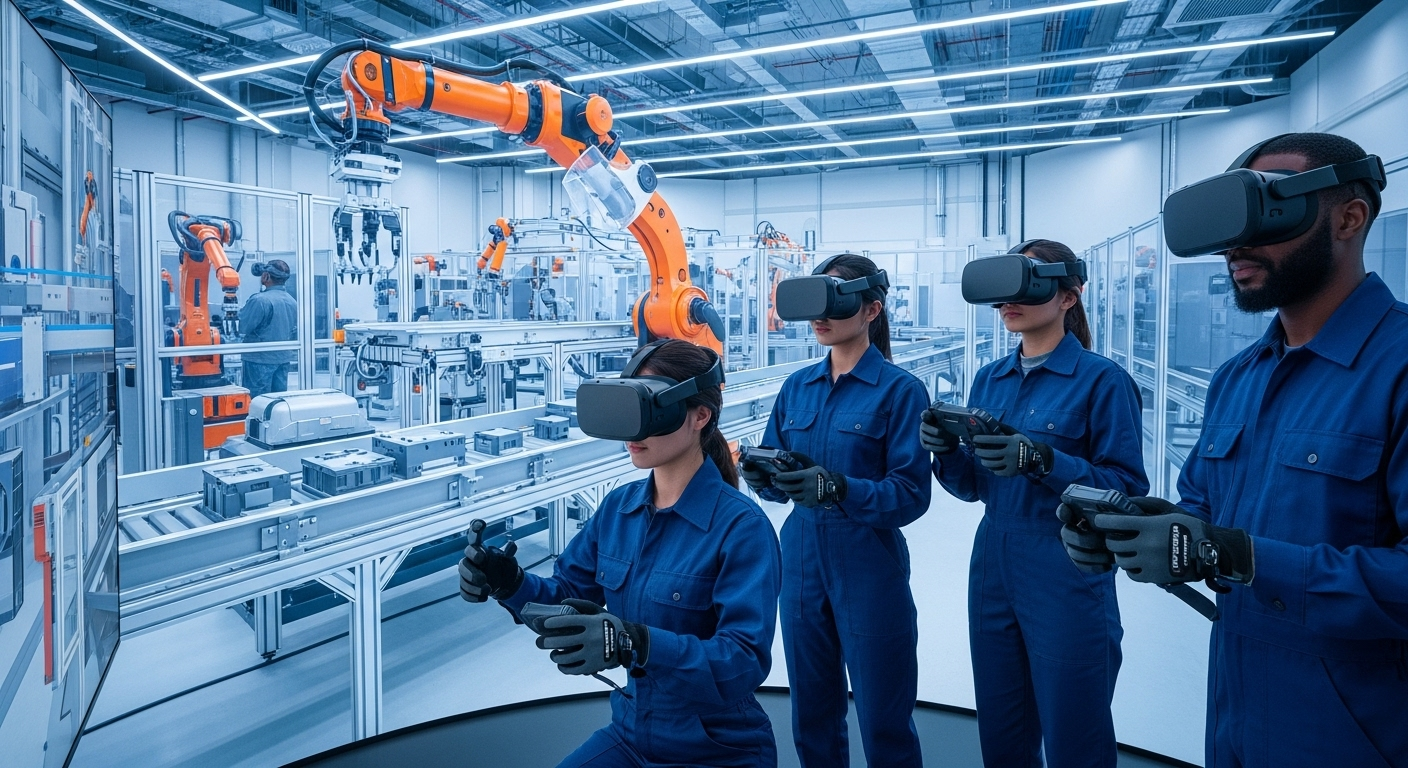Mapping practical curricula for smart factory technicians worldwide
A practical curriculum map helps technicians adapt to smart factory environments by linking core technical skills with hands-on practice. This teaser outlines why structured learning that blends digital tools, shop-floor experience, and assessment is important for technicians working with automation and robotics.

Smart factory technicians need curriculum frameworks that translate emerging technologies into measurable competencies. A practical curriculum balances foundational electrical and mechanical knowledge with applied digital skills, enabling technicians to support uptime, safety, and continuous improvement. Programs that combine classroom theory, simulation labs, and supervised shop-floor rotations make it possible to bridge classroom learning with real equipment, producing technicians who can operate, diagnose, and maintain increasingly digitized production systems.
Automation and digitization skills
Automation and digitization form the operational backbone of smart factories; curricula should cover programmable logic controllers (PLCs), industrial networks, and basic data flows from sensors to cloud platforms. Training modules can introduce protocol standards, human-machine interface (HMI) operation, and safe integration practices. Emphasize scenario-based exercises where students configure simple control loops and interpret digitized process data to make informed adjustments. This practical focus helps technicians understand how automation and digitization interact and where manual intervention or escalation is required.
Upskilling and reskilling pathways
Upskilling and reskilling strategies must be explicit, mapped to competency levels and career stages. Create modular coursework that lets experienced technicians refresh software and data-analysis skills while offering entry-level learners core electrical and mechanical foundations. Short, competency-focused microcredentials can validate intermediate abilities—such as network troubleshooting or PLC logic editing—and provide clear pathways to more advanced training. Including mentorship, peer learning, and documented skill checkpoints supports sustained workforce development across the lifecycle of technology adoption.
Simulation for onboarding and training
Simulation-based learning reduces risk and accelerates onboarding by allowing technicians to practice on virtual replicas of equipment and process flows. High-fidelity simulation supports troubleshooting exercises, fault-injection scenarios, and controls tuning without disrupting live production. Integrate simulation with performance metrics to assess decision-making, diagnostic steps, and adherence to safety protocols. Coupling simulator time with follow-up in controlled lab environments ensures knowledge transfer and builds confidence before technicians engage with live systems.
Robotics and controls fundamentals
Robotics and controls content should blend mechanical basics, kinematics, and control theory with hands-on programming and safety standards. Practical labs where trainees program motion sequences, tune controllers, and implement interlocks teach both operational and safety competencies. Emphasize collaborative robots (cobots) and integration points with conveyor systems, grippers, and vision systems to reflect common factory scenarios. Including troubleshooting labs develops the ability to isolate issues across mechanical, electrical, and software layers.
Maintenance and diagnostics training
Maintenance and diagnostics modules must prioritize predictive maintenance techniques alongside traditional preventive workflows. Teach condition-monitoring tools, vibration analysis basics, and data-driven alarm interpretation so technicians can move from reactive fixes to planned interventions. Provide structured diagnostic workflows: symptom recognition, data gathering, hypothesis testing, and verification. Embedding real fault-cases and failure-mode analysis in the curriculum prepares technicians to reduce downtime and improve mean time to repair while maintaining compliance and safety.
Apprenticeships and competency assessment
Apprenticeships remain a practical route to consolidate learning under experienced supervision while integrating formal competency assessments. Design apprenticeships with clear milestones tied to specific competencies—controls commissioning, robot setup, or network configuration—and include periodic formal evaluations. Use competency-based assessment tools that combine observed performance, simulation outcomes, and written checks to document readiness. Well-structured apprenticeships link classroom learning, on-the-job training, and measurable outcomes that employers and regulators can recognize.
Conclusion
A mapped, practical curriculum for smart factory technicians aligns technical content with measurable competency and workplace relevance. Blending automation, robotics, controls, simulation, and maintenance training within modular pathways supports both upskilling and reskilling. When curricula integrate apprenticeships, competency assessments, and real-world diagnostic practice, they produce technicians capable of sustaining and improving digitized manufacturing operations across diverse local contexts.





